People
Faculty
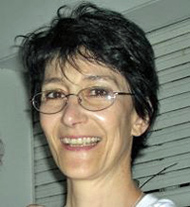 Graciela Gelmini
Graciela Gelmini
Professor, Theory of Elementary Particles, Astroparticle Physics, and Phenomenology
Office: PAB 4-937
Phone: 310-825-4293
Email:
Website
Professor Gelmini has been working on astro-particle physics, especially in the problem of dark matter, where she has studied different dark matter particle candidates. She is also interested in different aspects of the physics of neutrinos.
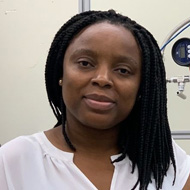 Alvine Kamaha
Alvine Kamaha
Assistant Professor, EEP
Office: Knudsen 4-107b
Phone: 310-206-4548
Email:
Professor Kamaha's main interest is to understand the nature of the dark matter of the universe. While astronomical and cosmological observations show that ~85% of the universe is made out of dark matter, the fundamental nature of the particles making up this dark matter is still unknown. Kamaha primarily works on the U.S. flagship dark matter experiment called LUX-ZEPLIN (LZ)which has been designed to reach unprecedented sensitivity in the search for high-mass WIMP dark matter candidates. Her research group works on key aspects of LZ, one of which is the detector calibration, as a continuity of the central role she played as the experiment calibration operation coordinator during the detector construction phase. She is also setting up a test facility here at UCLA to work on several R&D projects to optimize different detector techniques including a novel technique which could be used to probe light dark matter particles.
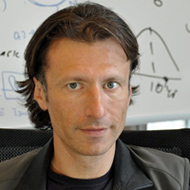 Alexander Kusenko
Alexander Kusenko
Professor, Professor, Physics & Astronomy, UCLA; Senior Scientist, Kavli IPMU, U. of Tokyo, Japan
Office: PAB 4-915
Phone: +1-970-KUSENKO (+1-970-587-3656)
Email:
Website
Professor Kusenko works on a broad range of topics in elementary particle physics, astrophysics, and cosmology. Professor Kusenko is a Fellow of American Physical Society and an active member of Aspen Center for Physics. He also holds an appointment of Senior Scientist at Kavli Institute for the Physics and Mathematics of the Universe, University of Tokyo, Japan.
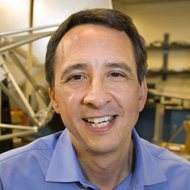 Rene Ong
Rene Ong
Professor, Astroparticle Physics
Office: PAB 3-915
Phone: 310-825-3622
Email:
Website
Professor Ong's research focuses on the astrophysics of the high-energy Universe, as revealed by gamma rays and
cosmic rays, and on the quest to understand the nature of dark matter. Very high-energy gamma rays pinpoint
sites of cosmic particle acceleration, study the non-thermal astrophysics near compact objects of all sizes, and
push physics frontiers through searches for physics beyond the standard model of particle physics. The group is
playing a central role in the currently operating VERITAS telescope in Arizona and in the major, future facility
known as the Cherenkov Telescope Array (CTA). A separate experimental program focuses on the detection of cosmic-ray
antimatter using the balloon borne experiment called GAPS.
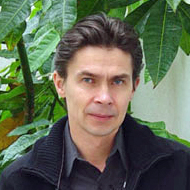 Vladimir Vassiliev
Vladimir Vassiliev
Professor, High Energy Physics and Astrophysics Experiment
Office: PAB 3-923
Phone: 310-825-3216
Email:
Website
Professor Vassiliev studies ground-based gamma-ray astronomy with VERITAS and Whipple Extragalactic Background Light. Other topics of interest include: super-symmetric dark matter annihilation in the universe, cosmic rays in extragalactic objects, VERITAS simulations, VERITAS Level I trigger (Constant Fraction Discriminator), and beyond VERITAS.
Professor Whitehorn focuses on neutrinos to understand the origin of the highest energy cosmic rays using IceCube and gravitational measurements of neutrino mass and number using the recently deployed 3rd-generation South Pole Telescope, as well as the design of successor instruments.
 Edward (Ned) Wright
Edward (Ned) Wright
Professor, High Energy Physics and Astrophysics Experiment
Office: PAB 3-909
Phone: 310-825-5755
Email:
Website
Professor Wright is interested in infrared astronomy and cosmology. He is the PI on the Wide-field Infrared Survey Explorer (WISE) which launched on 14 Dec 2009, and finished its first coverage of the whole sky on 17 Jul 2010. He worked on the COsmic Background Explorer (COBE) starting in 1978, and is still using COBE data to study the Cosmic Infrared Background. In 1992 he received the NASA Exceptional Scientific Achievement Medal for his work on the Cosmic Background Explorer. The COBE team received the Gruber Prize in Cosmology in 2006. Professor Wright was an Interdisciplinary Scientist on the Spitzer Space Telescope (formerly SIRTF) Science Working Group. He has worked on the SIRTF project since 1976. Professor Wright has studied fractal dust grains which are able to absorb and emit efficiently at millimeter wavelengths, and thus may be an important factor in studies of the cosmic microwave background. From 1994-1998, he has served as a Science Editor of The Astrophysical Journal. In 1995 he was named the CSEOL Distinguished Scientist of the Year.